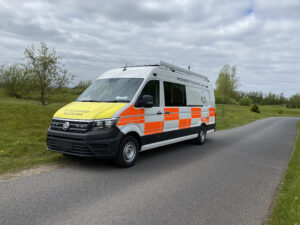Grey fleet vehicles are often necessary within businesses that require employees to make work-related journeys. A grey fleet vehicle can be a cash-for-car, a car obtained through an ECO scheme, a privately-owned vehicle, or a vehicle that is otherwise hired outside of any company-guided scheme.
Grey fleet vehicle schemes work like this – employees can use their own vehicle for work-related journeys and claim back the mileage under a grey fleet arrangement.
The benefits of having a grey fleet are obvious; it is usually cheaper than running a company-owned fleet, it can be more flexible for employees, and maintenance is often fully inclusive. But it also raises an enormous amount of risks, risks which need to be addressed because regardless of the systems your business puts in place, it is still liable for many things.
Let’s take a look at these grey fleet risks with actionable advice on how to tackle them.
Insurance
One of the biggest risks that needs addressing with grey fleet management is vehicle insurance. Fleet managers have a duty of care under the Health and Safety at Work Act 1974 to ensure that their drivers have the correct form of vehicle insurance cover.
The proliferation of online insurance means that drivers can now get insurance quotes faster than ever before but contrary to belief extending private vehicle cover to include business travel isn’t always straight forward. This is often the case because some insurance administrators don’t fully understand their own policies and this results in confusion among fleet managers.
Types of cover
There are three basic kinds of business cover: Class 1 which is extended cover for the private individual, Class 2 which is cover for named drivers, and Class 3 which is cover for commercial sales-people.
Most grey fleet drivers will require Class 1 insurance cover which is simply an extension of their regular policy. Most insurers will be able to add this extension at no cost, however annual mileage, vehicle type, and location can make a difference with this so it’s important to ask about costs straight away.
Also consider that some insurers do not call these extensions Class 1, Class 2, Class 3, so make sure that an insurer fully understands what type of cover you are looking for prior to taking it out.
Vehicle safety and maintenance
Vehicle safety is another risk for fleet managers. As touched on above, employers have a corporate social responsibility under the Health and Safety at Work Act 1974 to ensure that so far is as reasonably practical the health and safety needs of their employees is met. When it comes to grey fleet vehicles, this means ensuing that the vehicle being driven is roadworthy and up to standard.
MOT
All cars and vans must have an annual MOT if a vehicle is over three years old, or in some cases one year old. It’s critical that as a fleet manager you keep up to date with grey fleet vehicle MOTs because although it is the responsibility of the owner to MOT their vehicle, an out of date MOT voids vehicle insurance including all classes of business vehicle insurance.
A great way to help your employees keep up to date with their MOT and to ensure that MOTs are carried out effectively is to consider partnering with local MOT service centres to set up a deal for your employees. This might include automatic bookings and money off.
Servicing and maintenance
Whilst keeping up to date with grey fleet vehicle MOTs is relatively simple, keeping up with service schedules and general maintenance is more difficult. Generally, it is the responsibility of the vehicle owner to replace light bulbs, purchase new tyres, or otherwise maintain their vehicle, but it will make life easier if your company has a claim back process for grey fleet users which promotes maintaining a healthy vehicle.
A claim back process might include a 50/50 split of costs for any maintenance bill that exceeds £200 or it might involve a deal with a local tyre supplier. Whatever the case, educating employees about servicing and maintenance and creating a culture of safety is paramount when it comes to vehicle safety.
Driver competency
In the public sector alone, the Office of Government Commerce (OGC) estimates that nearly 57% of ‘at work’ mileage is covered by employees in privately-owned vehicles, or grey fleet vehicles. In the private sector, estimates suggest that 50% of ‘at work’ mileage is covered in grey fleet vehicles.
As such, fleet managers need to look into driver competency and training, to ensure that employees covering mileage in privately-owned vehicles have the basic skills required to handle the increasingly busy roads of the UK and are able to carry out their work in a way that is safe for them and others.
Fleet driver competency training
It is recommended that fleet managers develop a structured training program for grey fleet vehicle drivers which focuses on health and safety, and discusses in-depth the risks associated with driving work-related journeys. This training program can be a three-day or two-day course split over a number of weeks or it can be carried out all in one go. It should focus on all of the areas touched on above; insurance, vehicle safety; and it should offer insight into the roads.
Alternatively, fleet managers can outsource this. There are plenty of companies out there which specialise in fleet driver competency training. The upshot to working with another professional company is that you can rely on their service to always deliver unique risk solutions.
Fitness and health
Perhaps the most obvious risk of all for fleet managers is allowing an employee to drive their vehicle when they are unfit to do so. In a worst case scenario where a crash occurs, fleet managers or the business may be held liable for allowing an employee to drive whilst ignoring obvious signs that they are unfit to drive, for example, from the effects of medication, drink, drugs, or underlying health issues.
This is a risk that needs to be addressed immediately but it’s also one which with a culture of health and safety integrated into fleet management is easy to control.
Managing fitness and health
Many fleet managers nowadays require their fleet drivers to take monthly or annual medical checks. The medical check, which is usually carried out by that persons GP, focuses on individual health needs and conditions and includes a full medical examination, for example, blood pressure, weight, and BMI. A lot of people neglect seeing their GP for months or years at a time, so integrating this requirement into your fleet management has obvious benefits.
When it comes to grey fleet vehicle drivers that may be unfit to drive due to the effects of medication, drink, or drugs, this can be harder to control, because screening or meeting with every single fleet driver every time they’re due to head out is impossible. To this end, a fleet policy for not drinking within 48 hours of a job and raising any personal concerns over fitness is highly recommended.
Mileage
Research suggests that employees that are asked to travel more than 50 miles before and after a full day’s work are liable to drowsiness. Also, time pressures placed on employees – such as having to get to a location at a certain time – can lead to poor driving and put employees and others at unnecessary risk.
Capping the daily mileage of grey fleet vehicle drivers might sound counterproductive or impossible within some businesses, but it is often a necessary step towards keeping fleet vehicle drivers fit, healthy, and safe out on the roads. Another step you should take is promoting breaks and recommending that drivers take a 10-15 minute break for every hour they drive. This will limit the need for drivers to eat or drink behind the wheel (which is illegal) and it will also eradicate boredom.
Mobile phones
From the very start of your fleet management you should implement a culture for health and safety and a strict company policy against the use of mobile phones or other mobile devices behind the wheel. It is illegal for drivers to use hand-held phones or similar devices behind the wheel under The Road Vehicles (Construction and Use) (Amendment) (No. 4) Regulations 2003, and those caught face an automatic 3 penalty points and a fine of £100.
Even though using a hand-held device behind the wheel is illegal, as a fleet manager you will know that your fleet drivers do sometimes do it. To stop this from happening or to at least prevent it, you should implement a strict disciplinary procedure for the use of hand-held devices behind the wheel, which gives exception to nobody within the fleet. A three-strikes and you’re out policy is highly recommended.
Drinking, eating, and smoking
Drinking, eating, and smoking behind the wheel should be thoroughly discouraged within your fleet. The Telegraph reported on the reactions of motorists eating or drinking being 44 percent slower than usual in 2012, and in 2007 regulations relating to smoking in company vehicles came into force which banned smoking in company cars, vans, and lorries at all times, if they can be used by more than one person.
With regard to grey fleet vehicles, if a vehicle is used more for private use than business use, then that 2007 ban doesn’t apply, but it’s still important to consider that smoking behind the wheel creates a distraction and it’s extremely unhealthy – what if another employee needed to borrow that vehicle and didn’t smoke? As a fleet manager you would be putting that person at unnecessary risk.
Just as with mobile phones, you should have a company policy that’s against drinking, eating, or smoking behind the wheel. With research suggesting that doing anything behind the wheel other than concentrating on the road ahead decreases reaction times, a policy against these things is going to at least stick in the minds of your fleet drivers whilst they’re out on the roads.
Transportation of dangerous materials
The transportation of dangerous materials, such as the transportation of chemicals and dangerous substances, should only be carried out by vehicles suitable for the job. The vast majority of grey fleet vehicles are cars or vans, neither of which in their standard form are suitable vehicles.
This is a fleet risk in the scientific sector and distribution sector in particular. You should carry out risk assessments on each load for transit and assign a specialised vehicle for each transportation – if you do not and an accident occurs, it is you and the business you work for which can and will be held liable. If in doubt, simply risk assess as you would with any dangerous goods carriage.
Education
Of course, as a fleet manager, there’s only so much you can control. Some employees might take shortcuts or take unnecessary risks by transporting dangerous materials in an unsuitable vehicle. This is where employee education and training comes in. Your fleet drivers must be educated to understand the risks associated with the transportation of chemicals and dangerous substances. This can be merged with driver competency training.
A section of training that covers the effective transportation of dangerous materials with best practices is highly recommended.
Overall
It is the fleet manager’s responsibility that the above risk factors are checked, monitored and dealt with effectively. The business you work for as well as the driver of a grey fleet vehicle can be held accountable for any loss or damages as a result of improper vehicle insurance, vehicle maintenance, driver incompetency, fitness and health issues, mileage concerns, use of mobile phones, eating, drinking, or smoking behind the wheel, and the transportation of dangerous materials.
Organisations and fleet operations with a positive safety culture and strong education program can effectively tackle the risks associated with grey fleets. The most valuable advice we can give you as a fleet manager is this – always deal with grey fleet vehicles and drivers on a one-to-one basis to ensure that solid health and safety education is achieved and the points above are addressed.
Share
Leave a Reply



